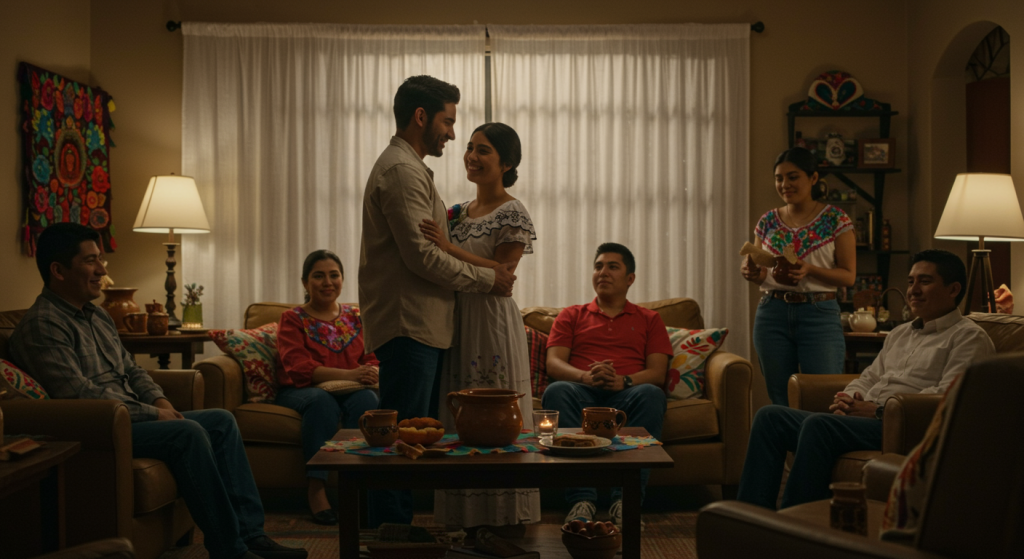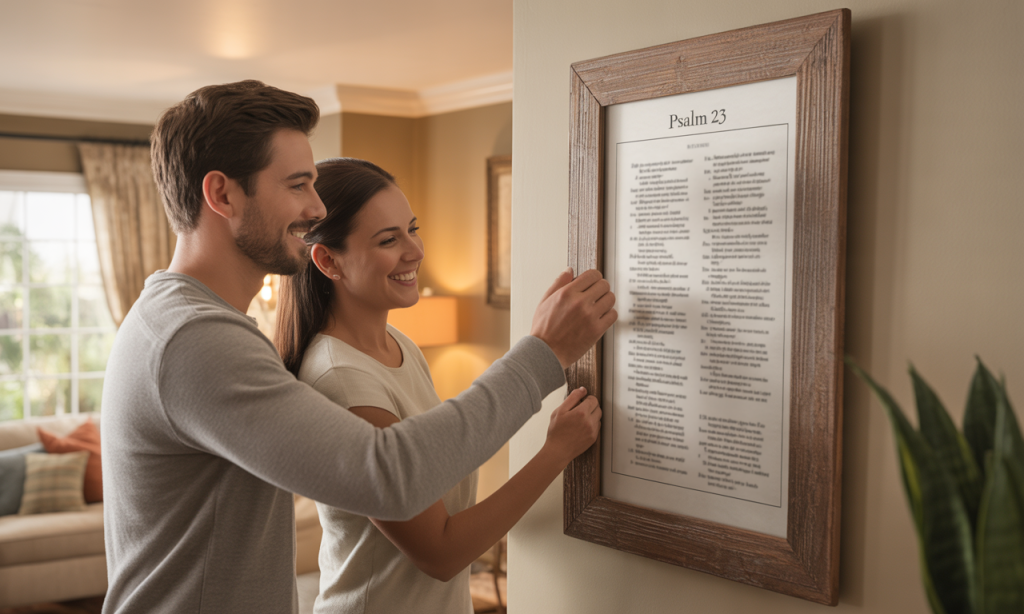Remembered on Purpose: How Couples Can Reclaim Joy Through Shared Testimony

Every couple has a story God has written—times of laughter, moments of rescue, and seasons where His grace carried you when strength failed. But when life gets hard, those stories fade. The stress of today drowns out the faithfulness of yesterday, and what was once gratitude turns into forgetfulness. That’s why “remembering on purpose” isn’t just nostalgia—it’s ministry.
When couples share how God has shown up in their marriage, something powerful happens: gratitude reignites, unity strengthens, and faith rises again. This post helps you turn your shared memories into shared testimony—so what God did for you yesterday can sustain your marriage today and inspire others tomorrow.
Why Remembering on Purpose Matters in Marriage
 In the Old Testament, God often told His people to build memorials after miracles—to stack stones, tell the story, and pass it down. Why? Because He knew we forget fast. Gratitude fades when fear grows loud.
In the Old Testament, God often told His people to build memorials after miracles—to stack stones, tell the story, and pass it down. Why? Because He knew we forget fast. Gratitude fades when fear grows loud.
Marriages work the same way. When stress, fatigue, or disappointment crowd in, it’s easy to believe “God isn’t working anymore.” But when you deliberately rehearse His past faithfulness, you invite hope back in. You remember that the same God who helped you through that season can handle this one too.
Remembering on purpose keeps your heart aligned with truth—it reminds you that you’re not just surviving life; you’re living a story God is still writing.
This idea builds naturally on Faithful Remembering: Spiritual Practices to Recall God’s Goodness in Marriage, which explores how reflection strengthens faith. If that post is the foundation, this one is the expression—the “how” of turning remembrance into shared joy and ministry.
Step One: Tell the Story Again
 When was the last time you told each other how you met—and what you both saw in each other that made you stay? Those stories carry emotional and spiritual power. They’re not just romance—they’re revelation.
When was the last time you told each other how you met—and what you both saw in each other that made you stay? Those stories carry emotional and spiritual power. They’re not just romance—they’re revelation.
Start here:
- The first laugh you shared.
- The hardest season God carried you through.
- The provision that came when you didn’t see a way.
- The prayer that was answered differently but better.
Telling those stories again isn’t redundant; it’s restorative. It reawakens emotions your marriage already knows how to feel—gratitude, connection, awe.
If you need help starting, look back to From Friends to Forever: Using Your Origin Story to Stabilize Today. That post helps you identify your “why we chose us” moment, which forms the first chapter of your testimony.
Step Two: Name God’s Fingerprints
 It’s easy to talk about “what happened.” The deeper step is naming how God moved through it.
It’s easy to talk about “what happened.” The deeper step is naming how God moved through it.
Think back on moments that looked ordinary but became defining:
- A delay that turned into protection.
- A closed door that redirected you toward something better.
- A disappointment that taught you dependence.
- A time you thought you wouldn’t make it—but did.
When you trace God’s fingerprints, you transform memories from random events into living testimonies. You start seeing patterns of grace that repeat—reminders that He’s been guiding your story the whole time.
This is similar to building a spiritual version of The Evidence File: Building Proof That Love Still Lives Here—but instead of tracking moments of care between you, you’re collecting evidence of God’s care for you both.
Step Three: Turn Private Gratitude into Shared Testimony
 Your story isn’t just for you—it’s meant to remind others that God is still in the business of redeeming love.
Your story isn’t just for you—it’s meant to remind others that God is still in the business of redeeming love.
Sharing your testimony doesn’t mean airing all your details; it means declaring that God’s goodness is real. It’s about saying, “We’ve seen His hand, and we’re still here because of it.”
Ways to share your story:
- With your kids: Tell them about prayers God answered.
- With your friends: Encourage another couple walking through hardship.
- At church or small group: Share how God’s timing or provision showed up in your marriage.
- With each other: Speak faith out loud in daily conversation.
When you make remembering public, it multiplies gratitude. Your story becomes a seed of hope for someone else’s garden.
This rhythm connects with Proof of Life: Finding What’s Still Working When Everything Feels Off—where noticing small signs of life leads to greater faith. Shared testimony takes those small signs and turns them into shared courage.
Step Four: Create a Testimony Tradition
 If you only tell your story when you hit a crisis, you’ll forget it between storms. Make remembering a rhythm, not a reaction.
If you only tell your story when you hit a crisis, you’ll forget it between storms. Make remembering a rhythm, not a reaction.
Here are three ways to build a “remembered on purpose” habit:
1. The Anniversary Testimony Dinner
Once a year, write down the top five ways you saw God move in your marriage that year. Share them over dinner and pray together, thanking Him for His ongoing faithfulness.
2. The Monthly “God Did That” Journal
Keep a shared note on your phone or a small notebook. Every time you see provision, peace, or answered prayer, jot it down. Review it monthly.
3. The Family Faith Wall
If you have kids, display small reminders—photos, Scriptures, souvenirs—from seasons when God carried your family. Let your home testify visually to His goodness.
These practices echo the principles from Design Your Marriage Rhythms: The Rituals & Resets Handbook—because intentional structure sustains spiritual habits.
Step Five: Speak Gratitude into the Present
 Remembering on purpose isn’t just about the past—it’s about letting past gratitude shape current attitude. When you recall how God showed up before, it reshapes how you speak about what’s happening now.
Remembering on purpose isn’t just about the past—it’s about letting past gratitude shape current attitude. When you recall how God showed up before, it reshapes how you speak about what’s happening now.
Try starting your prayers with, “Lord, thank You for…” before you say, “Lord, please help with…” This small shift turns requests into responses. You stop approaching life as a crisis to survive and start seeing it as a continuation of grace.
This mindset mirrors When Hope Feels Impossible: Why Future-Visualization Backfires (and What Works Instead). Instead of forcing yourself to imagine a better future, you ground yourself in a proven past—and that’s where real hope begins.
Step Six: Redeem the Hard Chapters
 It’s tempting to skip painful memories, but even your hardest seasons can testify. Testimony doesn’t mean glossing over pain—it means showing how grace met you there.
It’s tempting to skip painful memories, but even your hardest seasons can testify. Testimony doesn’t mean glossing over pain—it means showing how grace met you there.
Ask yourselves:
- What did this hardship teach us about God’s strength?
- What fruit came from that storm?
- Who did we become through that experience?
The more honestly you remember, the more others can see God’s redemption in your story. Every scar becomes a sermon about healing.
This step aligns beautifully with The Memory Bank: Saving Good Moments for the Days You Forget. Both remind you that memory isn’t just for comfort—it’s for transformation.
Step Seven: Let Joy Be Your Ministry
 As your faith deepens through shared remembering, joy naturally returns. Gratitude creates oxygen in a marriage—it softens tone, resets focus, and rebuilds connection.
As your faith deepens through shared remembering, joy naturally returns. Gratitude creates oxygen in a marriage—it softens tone, resets focus, and rebuilds connection.
Your joy then becomes contagious. It ministers without preaching. When people see two imperfect humans walking in peace because of grace, they see evidence that God is real.
Joy doesn’t erase hard things—it redeems them. Every laugh shared after tears, every gentle touch after tension, is a sermon of resurrection.
You don’t need a platform to minister—your marriage is one.
If you’ve been practicing Anchor Objects: Little Things That Trigger Big Love, consider adding testimony items—photos, Scripture verses, or mementos from answered prayers—to those spots. Each one becomes a visual sermon of joy remembered and grace repeated.
Step Eight: Share It Forward
 God’s faithfulness is never meant to stop with us. When couples tell their stories, they pass courage to the next generation.
God’s faithfulness is never meant to stop with us. When couples tell their stories, they pass courage to the next generation.
If you’ve walked through something that nearly broke you, someone else needs your story. Tell it with humility, not polish—with honesty, not performance. Your authenticity becomes someone else’s invitation to believe again.
You can share it:
- In a marriage small group.
- As part of a testimony night.
- Through a social post highlighting a “Then/Now” moment.
- In a handwritten note to a younger couple.
When you share your testimony, you multiply hope.
Closing Reflection: Testimony Is How You Keep Joy Alive
 Joy isn’t something you chase—it’s something you remember. Every time you speak your testimony aloud, you remind your heart of what’s still true: God has been faithful, love has endured, and grace is still working.
Joy isn’t something you chase—it’s something you remember. Every time you speak your testimony aloud, you remind your heart of what’s still true: God has been faithful, love has endured, and grace is still working.
When you choose to remember on purpose, you turn your marriage into a living altar—one where laughter, faith, and gratitude meet again.
So tonight, ask your spouse one simple question:
“What’s one moment we haven’t thanked God for yet?”
Then thank Him together. That’s testimony in its purest form—joy remembered, faith renewed, love restored.


